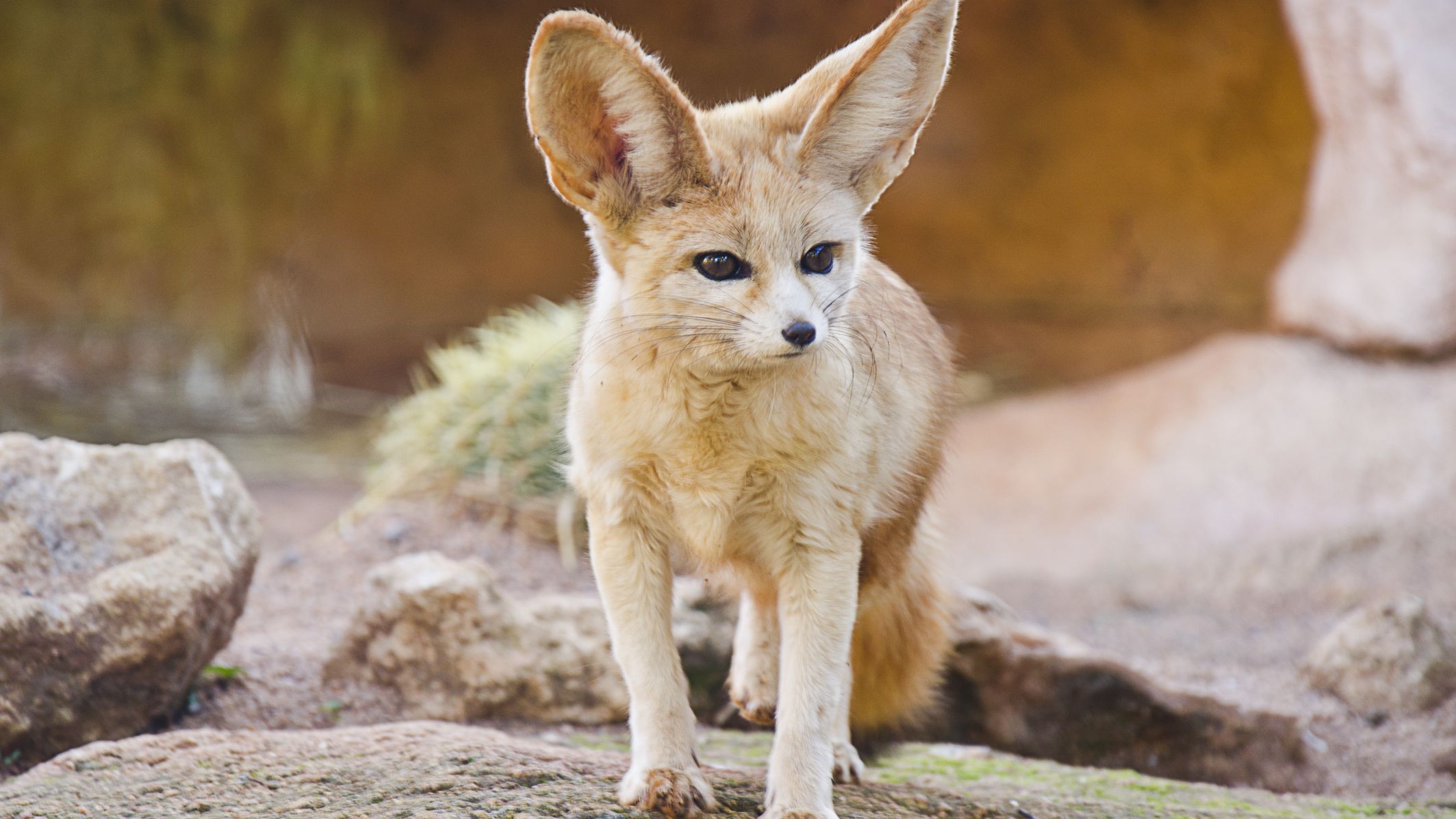The fennec fox (Vulpes zerda) is known for its enormous ears and little size. It is the littlest individual from the canid family. Whether the fennec is in the sort Vulpes is discussed in light of the fact that it has fewer chromosome matches than other fox species, lives in packs while different foxes are singular, and have separate aroma organs. Fenech foxes are once in a while known by the logical name Fenecus zerda. Its generally expected name comes from the Berber-Arabic word fan, signifying “fox.”
Depiction
The most unmistakable component of the fennec fox is its huge ears, which can compare to 6 inches. The ears assist the fox with recognizing prey around evening time and scatter heat during the day. Foxes are little, going long from 9 to 16 inches, with a rugged tail of 7 to 12 inches. Grown-ups weigh somewhere in the range of 1.5 and 3.5 pounds.
Fennel has a thick layer of cream tone with a dark tail. The soft coat shields foxes from temperatures that reach from beneath freezing around evening time to the north of 100 F during the day. Fur covers their paws, safeguarding them from consumes from hot sand and further developing a foothold on moving hills. Fennec foxes need musk organs tracked down in other fox species, yet have organs on the tips of their tails that produce a musky smell when the fox is surprised.
Convenience and Delivery
The fennec fox lives in North Africa and Asia. They stretch out from Morocco to Egypt, south to northern Niger, and east to Israel and Kuwait. Foxes are most at home in sand ridges, however, they live where the dirt is compacted.
Diet
Foxes are omnivores. Fennec foxes are nighttime trackers that utilize their delicate ears to identify the development of little underground prey. They likewise eat rodents, bugs, birds and their eggs, and products of the soil plants. Fenix will hydrate, however it isn’t needed. They get their water from food, as well as diving in the ground to make dew that creatures can lick.
Conduct
Fennec foxes impart utilizing different sounds, including a murmur like a feline’s. Guys mark an area with pee.
Other fox species are generally singular, however fennec foxes are exceptionally friendly. The fundamental social unit is a couple and their posterity for the current and earlier year. The gathering lives in wide nooks dove in sand or compacted soil.
Proliferation and posterity
The fennec fox mates once a year in January and February and conceive offspring in March and April. The development time frame ordinarily endures somewhere in the range of 50 and 52 days. The female or fox brings forth a litter of one to four packs in the sanctum. One conceived, Kit’s eyes are shut and his ears are collapsed. Units are weaned from 61 to 70 days old enough. The male feeds the female while she deals with the youthful. The fennec fox arrives at sexual development at nine months old enough and mates forever. Their typical future in imprisonment is 14 years and they are accepted to live something like 10 years in nature.
Discussion level
The IUCN characterizes the fennec fox protection status as being of “least concern”. Foxes are as yet bountiful inside the vast majority of their reach, so populaces might be steady. The species is recorded under CITES Appendix II to assist with shielding the foxes from global exchange misuse.
Danger
The main regular hunter of the fox is the bird owl. Fenech’s are pursued fur and reared for the pet exchange. In any case, the main dangers come from human settlement and the commercialization of the Sahara. Many foxes are killed by vehicles, as well as they might confront territory misfortune and debasement.
Fennec fox and the people
The fennec fox is the public creature of Algeria. In certain spots, it is lawful to keep fennec foxes as pets. While not really tamed, they can be trained. Like different foxes, they can dig or move under most walled areas. Most canine inoculations are ok for the fences. Albeit nighttime essentially, fennec foxes (like felines) adjust to human timetables.




